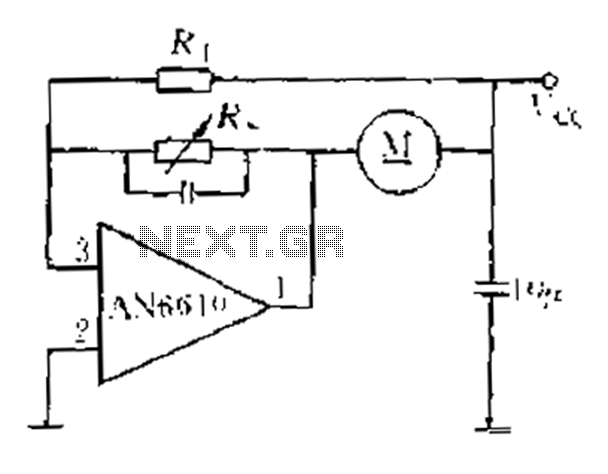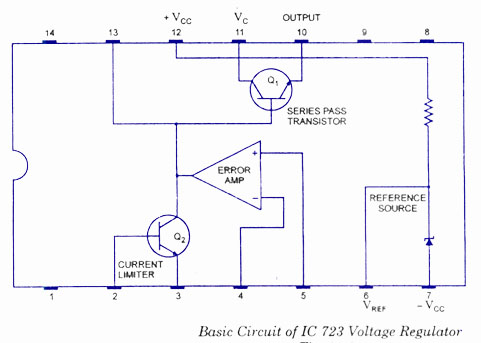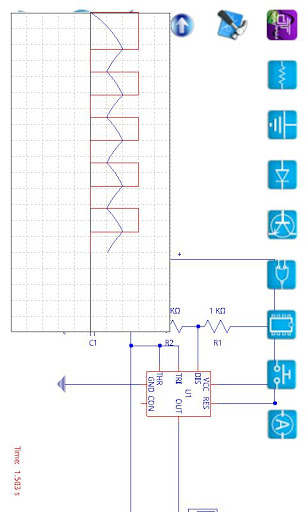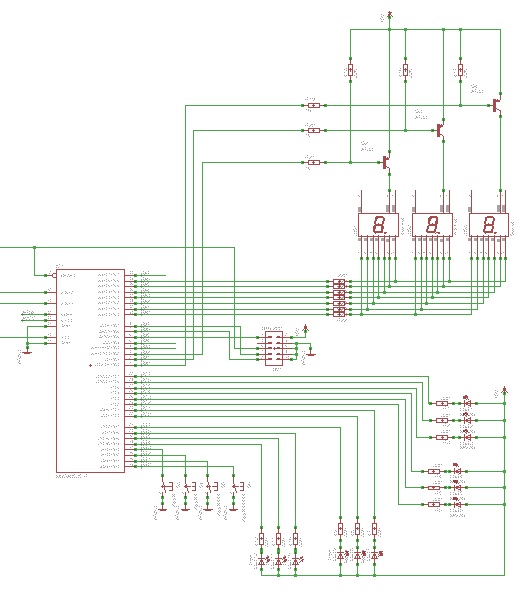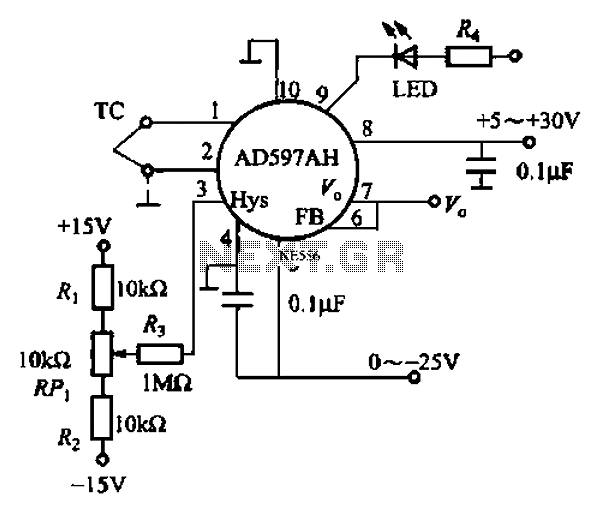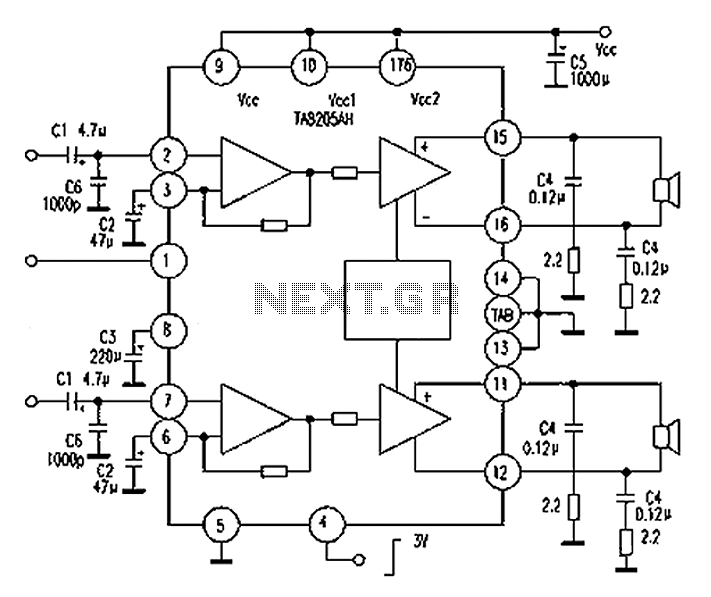
Sp6648 Flashlight Application
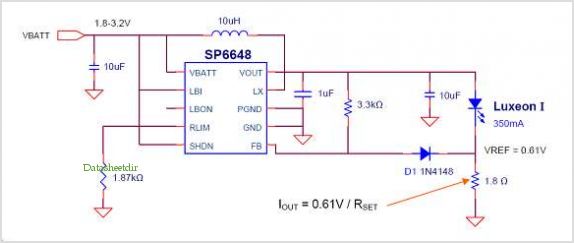
The infrared (IR) LED utilized in a remote control represents a specific application for an LED driver that may have requirements exceeding those of a standard LED driver application. This IR LED driver operates from a 9V alkaline battery, which provides a voltage range of 5.7V to 9.6V, higher than typical portable devices. Additionally, the pulse-width modulation (PWM) signal frequency must reach up to 100kHz, significantly higher than the usual PWM frequency of 100Hz. The turn-on and turn-off times for the IR LED driver are required to be less than 1 µs, whereas in standard LED applications, these times can exceed 100 µs. The SP6691 switching regulator, commonly used as a non-synchronous boost for voltage output or for driving LEDs with current regulation via the feedback (FB) pin, is configured differently in this scenario to drive an IR LED suitable for remote control applications with pulse rates up to 100kHz. To achieve such a high frequency, the conventional method of controlling the SP6691 through pulses to the enable (EN) pin would be inadequate, as the EN pin typically requires approximately 50 to 100 µs to initiate the SP6691 output. Furthermore, while the SP6691 is generally a boost regulator, in this application, it receives input voltage from a 9V alkaline battery, which can vary from 5.7V to 9.6V, while the output drives an IR LED requiring less than 2.0V.
The design of the IR LED driver circuit must accommodate these specific operational parameters to ensure optimal performance in remote control applications. The SP6691 regulator is selected for its ability to boost the input voltage to the required levels while also providing current regulation necessary for the IR LED operation. The circuit configuration should include a feedback loop that monitors the output current through the FB pin, ensuring that the current remains within the specified limits for the IR LED.
To facilitate the high-frequency PWM control, a dedicated high-speed driver circuit may be implemented to interface with the EN pin of the SP6691. This driver circuit can utilize a fast-switching transistor or a dedicated driver IC capable of generating pulse signals with rise and fall times well below 1 µs. This setup allows for the rapid switching of the SP6691 output, enabling the IR LED to respond quickly to the PWM signal, achieving the desired modulation frequency of 100kHz.
Additionally, careful consideration must be given to the layout of the PCB to minimize parasitic inductance and capacitance, which could adversely affect the performance at high frequencies. Proper decoupling capacitors should be placed close to the power pins of the SP6691 to ensure stable operation and to mitigate voltage spikes caused by rapid switching. The output stage should also be designed to minimize the voltage drop across the IR LED while ensuring it operates within its safe current rating.
Overall, the circuit design for the IR LED driver must incorporate these elements to achieve a reliable and efficient solution for remote control applications, ensuring that it meets the stringent requirements for voltage, frequency, and response time.The Infrared (IR) LED used in a remote control is an application for an LED Driver that has specific requirements that may exceed the requirements for a typical LED driver application. For this application, the IR LED driver will run off a 9V alkaline battery, which has a range of voltage from 5.
7V to 9. 6V, which is a higher voltage range than typ ical portable devices. The next requirement is for the frequency of the PWM signal to go as high as 100kHz, which is much higher than the typical PWM frequency of 100Hz. Lastly, the Turn-on and Turn-off time for the IR LED driver need to be less than 1 µsec, while in a typical LED application this CAN be more than 100 µsec.
The SP6691 switching Regulator used in this application is typically used as a non-synchronous boost for voltage output or for driving LEDs with a current regulation controlled by the FB pin. In this application, the SP6691 is used in a different configuration to drive an IR LED that CAN be used for a remote control with pulses as fast as 100kHz.
To implement such a high frequency, the typical method of controlling the SP6691 with pulses to the EN pin would not be fast enough since the EN pin CAN take about 50 to 100 µsec to begin to turn on the SP6691 output (see figure 1). Another consideration for the SP6691 would be that it is typically a boost Regulator while in this application the input voltage is from a 9V alkaline battery which CAN range from 5.
7V to 9. 6V and the output is an IR LED which needs less than 2. 0V. 🔗 External reference
The design of the IR LED driver circuit must accommodate these specific operational parameters to ensure optimal performance in remote control applications. The SP6691 regulator is selected for its ability to boost the input voltage to the required levels while also providing current regulation necessary for the IR LED operation. The circuit configuration should include a feedback loop that monitors the output current through the FB pin, ensuring that the current remains within the specified limits for the IR LED.
To facilitate the high-frequency PWM control, a dedicated high-speed driver circuit may be implemented to interface with the EN pin of the SP6691. This driver circuit can utilize a fast-switching transistor or a dedicated driver IC capable of generating pulse signals with rise and fall times well below 1 µs. This setup allows for the rapid switching of the SP6691 output, enabling the IR LED to respond quickly to the PWM signal, achieving the desired modulation frequency of 100kHz.
Additionally, careful consideration must be given to the layout of the PCB to minimize parasitic inductance and capacitance, which could adversely affect the performance at high frequencies. Proper decoupling capacitors should be placed close to the power pins of the SP6691 to ensure stable operation and to mitigate voltage spikes caused by rapid switching. The output stage should also be designed to minimize the voltage drop across the IR LED while ensuring it operates within its safe current rating.
Overall, the circuit design for the IR LED driver must incorporate these elements to achieve a reliable and efficient solution for remote control applications, ensuring that it meets the stringent requirements for voltage, frequency, and response time.The Infrared (IR) LED used in a remote control is an application for an LED Driver that has specific requirements that may exceed the requirements for a typical LED driver application. For this application, the IR LED driver will run off a 9V alkaline battery, which has a range of voltage from 5.
7V to 9. 6V, which is a higher voltage range than typ ical portable devices. The next requirement is for the frequency of the PWM signal to go as high as 100kHz, which is much higher than the typical PWM frequency of 100Hz. Lastly, the Turn-on and Turn-off time for the IR LED driver need to be less than 1 µsec, while in a typical LED application this CAN be more than 100 µsec.
The SP6691 switching Regulator used in this application is typically used as a non-synchronous boost for voltage output or for driving LEDs with a current regulation controlled by the FB pin. In this application, the SP6691 is used in a different configuration to drive an IR LED that CAN be used for a remote control with pulses as fast as 100kHz.
To implement such a high frequency, the typical method of controlling the SP6691 with pulses to the EN pin would not be fast enough since the EN pin CAN take about 50 to 100 µsec to begin to turn on the SP6691 output (see figure 1). Another consideration for the SP6691 would be that it is typically a boost Regulator while in this application the input voltage is from a 9V alkaline battery which CAN range from 5.
7V to 9. 6V and the output is an IR LED which needs less than 2. 0V. 🔗 External reference
Warning: include(partials/cookie-banner.php): Failed to open stream: Permission denied in /var/www/html/nextgr/view-circuit.php on line 713
Warning: include(): Failed opening 'partials/cookie-banner.php' for inclusion (include_path='.:/usr/share/php') in /var/www/html/nextgr/view-circuit.php on line 713
